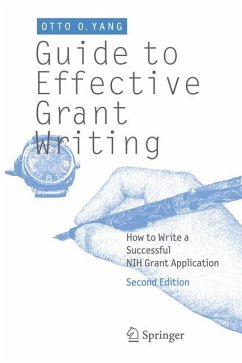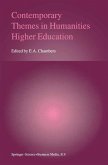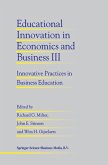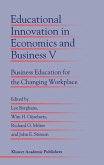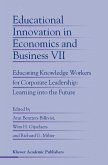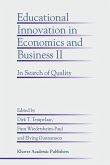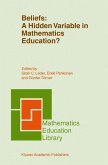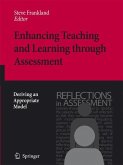Getting funding from the NIH for research is one of the most important skills required of all academic researchers, and here, Otto O. Yang offers a fully updated second edition to his straightforward, common-sense Guide to Effective Grant Writing. Yang shares his perspectives from both ends: as a pioneering researcher applying for funding as well as an NIH scientific consultant reviewing grants. He provides the reader with a step-by-step account on how to write a successful grant application, while highlighting common errors. This definitive guide to the NIH review process is a must for any pioneering researcher.
From the foreword:
The bane of academic existence is grant writing, now more than ever given new economic realities that change an already challenging landscape. Yet without grants most of us would not be able to continue to ply our trade. With this enormous importance of grants, it is surprising that we are so well trained to do research, with so little attention given to grant writing, which is the lifeblood of academic research.
Help became available with the first publication of this inspired book from Otto Yang MD, and now in its second edition it becomes even more invaluable. The book will be of great help to anyone writing a grant, even those of us who are more seasoned grant writers. The new edition is organized in similar fashion to the newly modified official NIH grant, readily helping the reader to navigate an entirely new terrain. Moreover, it outlines in very readable fashion specific suggestions for convincing study sections that the ideas being presented are worthy of funding, turning the reviewer into an advocate for the project being proposed. It also points out common errors that make reviewers lose enthusiasm even when the experiments are highly worthy of funding. Frequent use of examples makes the points very clear, and the clear style makes the book an enjoyable read.
- Bruce D. Walker, Professor of Medicine and Director of the Partner s AIDS Research Center at Harvard Medical School; Boston Massachusetts
Former Chairman of an NIAID/NIH study section Guide to Effective Grant Writing: How to Write a Successful NIH Grant, 2nd edition is a fully updated follow-up to the popular original. It is written to help the 100,000+ post-graduate students and professionals who need to write effective proposals for grants. There is little or no formal teaching about the process of writing grants for NIH, and many grant applications are rejected due to poor writing and weak formulation of ideas. Procuring grant funding is the central key to survival for any academic researcher in the biological sciences; thus, being able to write a proposal that effectively illustrates one's ideas is essential. Covering all aspects of the proposal process, from the most basic questions about form and style to the task of seeking funding, this volume offers clear advice backed up with excellent examples. Included are a number of specimen proposals to help shed light on the important issues surrounding the writing of proposals. The Guide is a clear, straight-forward, and reader-friendly tool. Guide to Effective Grant Writing: How to Write a Successful NIH Grant Writing is based on Dr. Yang's extensive experience serving on NIH grant review panels; it covers the common mistakes and problems he routinely witnesses while reviewing grants.
From the foreword:
The bane of academic existence is grant writing, now more than ever given new economic realities that change an already challenging landscape. Yet without grants most of us would not be able to continue to ply our trade. With this enormous importance of grants, it is surprising that we are so well trained to do research, with so little attention given to grant writing, which is the lifeblood of academic research.
Help became available with the first publication of this inspired book from Otto Yang MD, and now in its second edition it becomes even more invaluable. The book will be of great help to anyone writing a grant, even those of us who are more seasoned grant writers. The new edition is organized in similar fashion to the newly modified official NIH grant, readily helping the reader to navigate an entirely new terrain. Moreover, it outlines in very readable fashion specific suggestions for convincing study sections that the ideas being presented are worthy of funding, turning the reviewer into an advocate for the project being proposed. It also points out common errors that make reviewers lose enthusiasm even when the experiments are highly worthy of funding. Frequent use of examples makes the points very clear, and the clear style makes the book an enjoyable read.
- Bruce D. Walker, Professor of Medicine and Director of the Partner s AIDS Research Center at Harvard Medical School; Boston Massachusetts
Former Chairman of an NIAID/NIH study section Guide to Effective Grant Writing: How to Write a Successful NIH Grant, 2nd edition is a fully updated follow-up to the popular original. It is written to help the 100,000+ post-graduate students and professionals who need to write effective proposals for grants. There is little or no formal teaching about the process of writing grants for NIH, and many grant applications are rejected due to poor writing and weak formulation of ideas. Procuring grant funding is the central key to survival for any academic researcher in the biological sciences; thus, being able to write a proposal that effectively illustrates one's ideas is essential. Covering all aspects of the proposal process, from the most basic questions about form and style to the task of seeking funding, this volume offers clear advice backed up with excellent examples. Included are a number of specimen proposals to help shed light on the important issues surrounding the writing of proposals. The Guide is a clear, straight-forward, and reader-friendly tool. Guide to Effective Grant Writing: How to Write a Successful NIH Grant Writing is based on Dr. Yang's extensive experience serving on NIH grant review panels; it covers the common mistakes and problems he routinely witnesses while reviewing grants.
From the reviews of the second edition:
"It is a very recent book gives most timely information. ... This rule book narrates an insider's view about the how an application is evaluated and what could be winning point in writing for grants. Author's writing style along with illustrations provided will captivate readers' interest from preface to conclusion. ... As reader reaches the conclusion chapter the qualities like precision and clarity will become mantras to win the grant writing skill effortlessly!!" (T. S. Seemanthini, Journal of Psychosocial Research, Vol. 8 (1), January-June, 2013)
"It is a very recent book gives most timely information. ... This rule book narrates an insider's view about the how an application is evaluated and what could be winning point in writing for grants. Author's writing style along with illustrations provided will captivate readers' interest from preface to conclusion. ... As reader reaches the conclusion chapter the qualities like precision and clarity will become mantras to win the grant writing skill effortlessly!!" (T. S. Seemanthini, Journal of Psychosocial Research, Vol. 8 (1), January-June, 2013)

